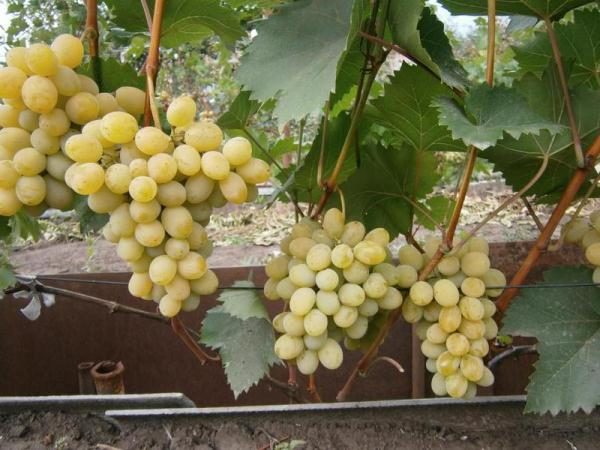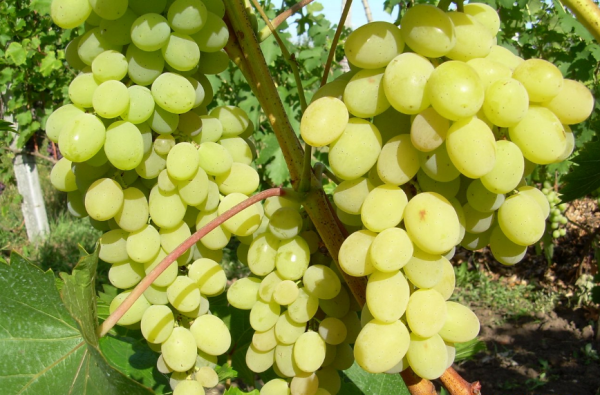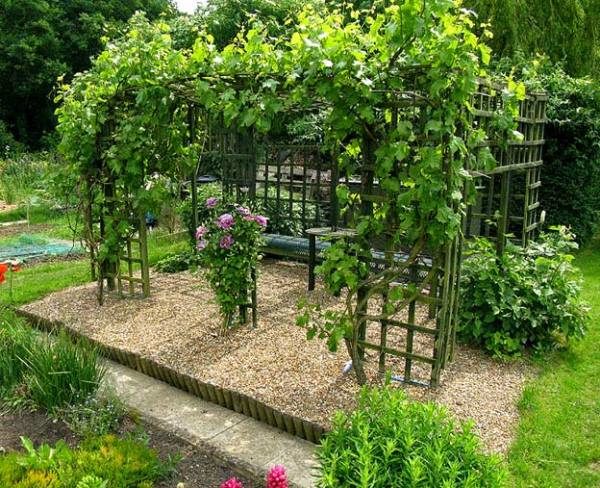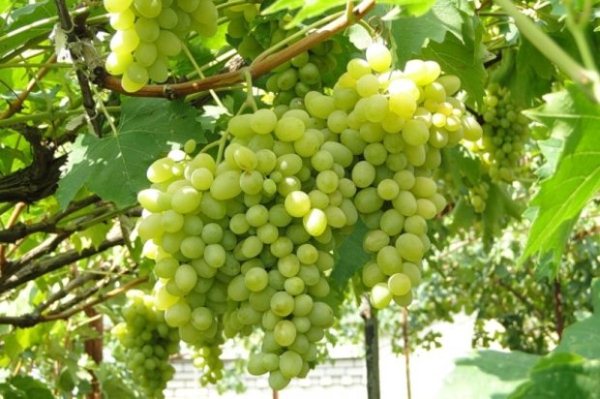Grapes ... Flexible vines, lush green, giving a thick shade, and heavy clusters of juicy, fragrant, delicious sweet berries. In the summer heat it is pleasant to be under the canopy of wide grape leaves and enjoy the taste of ripe large berries. Of course, not all varieties are so versatile but Augustine is just such a grape, which is described below.
In order to grow this crop yourself and get a good harvest, It is necessary to take into account many different subtleties: maturity dates of the variety, favorable growth conditions and compliance of your region with these conditions, resistance to frost and typical diseases.
Table of contents
A detailed description of the grape variety Augustine
Augustine is the common name of this variety, but it is often possible to find other names for the same grape: Pleven Steady, Phenomenon, V25 / 20. This variety was obtained through the work of Bulgarian breeders by crossing two grape varieties (the so-called “parent pair” - Pleven X Vilar Blanc). Scientists have tried much to improve the quality of Pleven grapes, backed by their high disease resistance Vilar Blanc.

Augustin early ripe grapes, ripening 117 days, the crop is harvested in mid-August. It refers to table varieties, i.e. it is preferable to use it fresh, without processing. Bushes vigorous, powerful, you can safely use to cover the arches and arbors. The plant has flowers of both sexes, it is perfectly pollinated even under adverse weather conditions,and is also able to actively pollinate nearby varieties with female flowers.
The leaves are large, dark green, slightly dissected, almost round. The vine in the period of ripening takes a red-brown color in the dot (caulk), young shoots grow very quickly and densely.
Regions of growing varieties Augustine are quite extensive, as it is well tolerated by low temperatures - frost-resistant in winter, the berries ripen even in cold rainy summer. Prefers soils well-fertilized and hydrated, with good care gives super high yields - from one bush can be collected to 60 kg (!) berries, but even without special care, it will still produce a good and, most importantly, a stable harvest for many years.
Characteristic berries
Bunches of Augustine medium-large - 500-800g (sometimes, on arches and gazebos with free growth reach 1000-1200g), conical in shape, often have one wing. Berries They are not tight, but they are rather large in size - 27x18 mm, weight 5-8 g, slightly elongated oval.

Colour grapes - transparent amber, with a slight white bloom. In the prism of sunlight, beautiful oblong berries are enlightened, greatly improving the presentation of the clusters. Peel dense, but it does not affect the taste, as the pulp the berries are also dense, fleshy - in general, the taste is very harmonious and rich, the aroma is traditional.
After ripening the bunch to 2 weeks can stay on the vines without losing its presentation and quality, the berries are not showered. Augustine does not form small berries (peas), perfectly tolerates transportation, berries can crack only when they fall too heavy.
Main advantages and disadvantages
Grapes Augustine inherent in all the qualities of the table variety. It is practically not subjected to technical processing, as it is perfect for fresh consumption. Of the advantages should be highlighted:
- great sweet taste elastic juicy berries;
- early ripening of fruits the possibility of long-term storage on the bush;
- good frost resistance - up to 24about C, resistance to common fungal infections;
- the good transportability;
- fruit not damaged by wasps;
- stability yields;
- possibility of use in the decoration of arches and arbors.

But, despite the many positive qualities, there are some shortcomings that need to be prepared, growing Augustine in the garden:
- the biggest drawback noted by specialists is - multiple bones quite large;
- in case of prolonged rains ripe berries may crack, rot and crumble;
- uncollected ripe berries start to crumble.
Breeding methods, planting, vine care
Like all grapes, Augustine breeds cuttings or seedlings, both in spring and autumn. Seed propagation is not recommended because new plants lose their genetic properties.
Despite the fact that this variety is unpretentious, if you want to collect stable, high yields, it is better to follow the generally accepted rules.Saplings with roots should be planted in May, when the positive temperature is established, to drive in pegs for each support near each. Before full rooting, be sure to water. During the summer, the plant is fully adaptable and will easily endure the winter cold. Place for landing choose sunny, open. The distance between the bushes - 1.5 m, between the rows - 3 m.

A place for the plant should be prepared in advance: dig a deep hole - at least 0.8 m, pour into it 2 buckets of compost mixed with the soil, sprinkle it on top with a layer of soil that will protect the roots from possible burns. Then leave the pit for a while, so that the soil in it subsided, and the seedling before planting for 2-3 days immersed in water to saturate with moisture. When planting, you need to make sure that the root neck is not under the ground.
Adult bushes do not need special care, it is enough to water in dry time. In the fall, it is recommended to make complex fertilizers, rotted manure and ash are excellent. Every year you need to prune the young shoots, leaving 10-12 or 12-16 ocelli.
Common diseases, methods of struggle
Variety Augustine is resistant to all types of fungal diseases and does not require preventive treatment.
Unpretentious, high yield, excellent taste - in all respects the grapes Augustine - one of the best representatives of table varieties, will delight with excellent yields and farmer, and the usual summer resident gardener.
